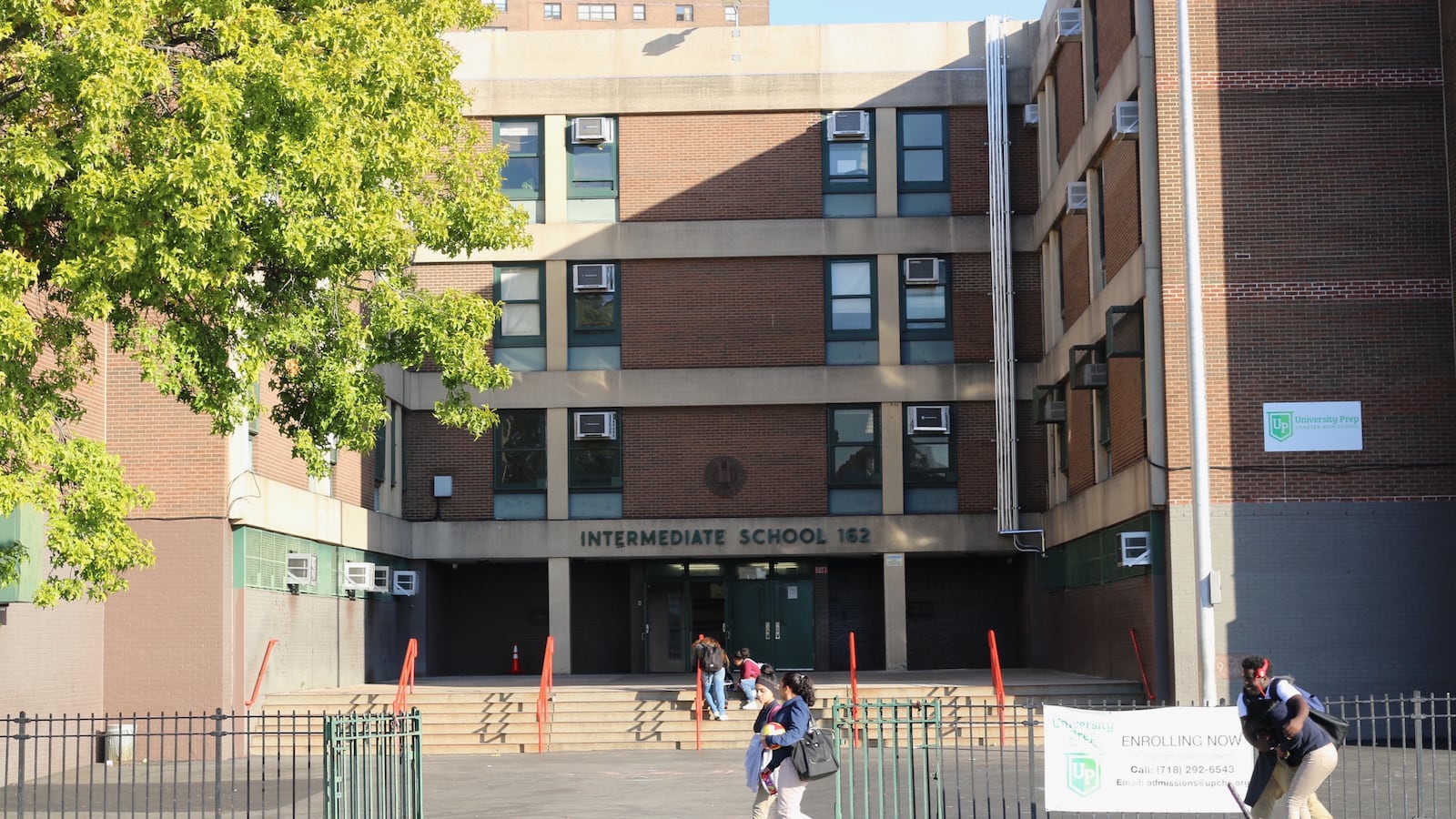After months of uncertainty, the city’s education department must submit a proposal Tuesday night outlining its plans for a struggling Bronx middle school, state officials confirmed Monday.
The school, J.H.S 162 Lola Rodriguez de Tio, has earned the unenviable distinction of being the only school in New York designated for outside takeover by the state’s education department.
Under the state’s complex receivership law, bottom-level schools that don’t quickly show signs of improvement on metrics ranging from attendance to test scores can be turned over to nonprofit managers or school improvement experts, effectively forcing Chancellor Carmen Fariña to cede control of the school to an outside entity.
In October, state education officials announced that J.H.S. 162 — which has been among the lowest-performing schools in the state since 2006 — barely missed its improvement goals, which meant the city would have 60 days to come up with a plan for giving up control of the school. At the time, state officials said the city could close or merge the school instead of turning it over to an outside manager.
Though that 60-day deadline came and went more than a week ago, state officials said they extended the deadline until Tuesday night. The city education department did not answer questions about what its plans for the school are, and the school’s principal, Deborah Sanabria, did not immediately respond to a request for comment.
The fact that J.H.S. 162 has been singled out for outside takeover has struck some education experts as arbitrary — essentially the result of a tug-of-war between the city and state over how to handle struggling schools. Although the school has posted low test scores, it also serves a high-needs population comprised overwhelmingly of low-income black and Latino families. Neither its scores nor demographics set it dramatically apart from several other schools in New York City.
“To single out one school and say it’s the worst school in the state is misleading on so many levels,” Eric Nadelstern, a former city deputy schools chancellor who is now a professor at Teachers College, told Chalkbeat last month. “It’s easy for the school to say there are many other schools in the city and state that match the same criteria.”
Meanwhile, the school has gotten conflicting evaluations from the state and city, adding to the complexity of the situation.
While the state’s receivership program was designed to be stricter and focus on quick improvements with the prospect of a takeover if gains don’t take hold, the city’s Renewal turnaround program (of which the school is also a member) is based on the premise that schools should be infused with resources and given time to improve — though the city has also not shied away from the possibility of additional mergers or closures.
In an ironic twist, the city recently announced that J.H.S. 162 hit 83 percent of its Renewal goals last year, placing it in the top 15 percent of Renewal schools in terms of the proportion of its benchmarks the school reached. Under the city program, the school even met a third of its goals early, making it eligible for certain “challenge targets” (which in some cases actually aren’t all that challenging).
In essence, the state’s benchmarks ended up labeling the school as perhaps the worst in the state, while the city’s own program says it is making noticeable progress — a surprising discrepancy given that city officials have insisted the city’s benchmarks are just as rigorous.
“The school showed improvements on some of their Renewal targets, but not on the measures that counted towards Receivership benchmarks,” city education department spokeswoman Devora Kaye wrote in an email. She did not elaborate further on the difference between the school’s performance on city and state benchmarks.
City officials indicated that its plans for the school will require review from the State Education Department and anticipated that process will happen soon. It was not immediately clear exactly how long that review process will take, and state officials did not respond to additional requests for comment.
“We’re working with the state and once the proposed plan is approved, we’ll engage closely with students, families, school staff and the larger community to ensure students are supported with continuity and a high-quality education,” Kaye wrote.

